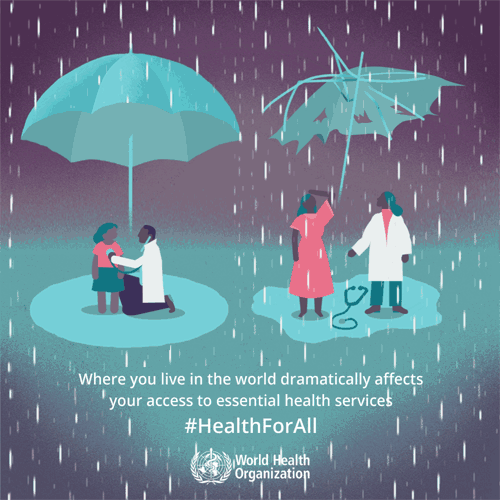
Making sure people have access to health services is a challenge everywhere. In a country like Afghanistan – where infrastructure is missing, communities can be remote, safety concerns are ongoing, and trained staff are lacking – it is even more difficult. To overcome these challenges, the Afghan government contracts out a Basic Package of Health Services to large non-governmental organizations (NGOs) to deliver.
Making sure people have access to health services is a challenge everywhere.
NGOs are one example of a non-state provider (NSP) of health care, but they are hardly the only type; and Afghanistan is hardly the only health system that relies on NSPs to deliver care. In Ghana and Uganda, faith-based groups provide a large proportion of health services. Bangladesh is just one example of a country where informal drug sellers are an important first point of contact for services. And in many countries, large for-profit private hospitals are often bound by few government regulations.
Ensuring healthy lives and promoting well-being for all, the third Sustainable Development Goal, depends greatly on achieving universal health coverage (UHC)– a state where ‘all people have access to all the services they need, of sufficient quality and without being exposed to financial hardship’. In many low- and middle-income country contexts, this means governments must learn to work with NSPs.
Despite the importance of the relationship between governments and NSPs, we know relatively little about how countries have engaged NSPs towards the achievement of UHC goals – learning that is key to improved policy design and implementation.
Ensuring healthy lives and promoting well-being for all, the third Sustainable Development Goal, depends greatly on achieving universal health coverage (UHC)– a state where ‘all people have access to all the services they need, of sufficient quality and without being exposed to financial hardship’.
That is why the Alliance for Health Policy and Systems Research, WHO – with support from Canada’s International Development Research Centre and the Rockefeller Foundation – developed eight research studies to better understand how governments have engaged non-state providers to move towards UHC. The studies took place in Afghanistan, Bangladesh, Bosnia-Herzegovina, Burkina Faso, Ghana, South Africa, Tanzania, and Uganda.
Faculty from the Department of International Health at Johns Hopkins University provided technical support to the country teams. The findings were brought together as a special collection of the International Journal for Equity in Health (IJEqH) that was released at the Fifth Global Symposium on Health Systems Research in October 2018.
So, what did we learn?
Active government ownership with clear lines of authority is necessary – The studies from Afghanistan and Bangladesh demonstrate the difference that active government ownership can make. Despite the Afghan program being significantly funded by donors, the Ministry of Health took ownership of the terms of engagement and had a clear line of authority in this process. On the other hand, the experience of Bangladesh’s Urban Primary Health Care project suggests that relatively weak engagement of government and multiple government agencies without clear lines of responsibility negatively influence program performance.
Governments need to enhance capacity for managing contracts – Government ownership is, in turn, dependent on governments being able to effectively manage the engagement with NSPs. These include capacities to develop effective contracts and capacities to monitor providers, as well as those to develop and effectively implement regulatory measures. Effective regulation of NSPs is a challenge even for upper middle-income countries, as is evident from the findings of the study in Bosnia-Herzegovina.
Service coverage challenges often persist even after engaging NSPs – Engaging NSPs does not automatically result in improved service coverage since they often face many of the challenges of public providers. NSPs face challenges to recruiting and retaining health workers in remote and underserved areas. The dependence on funding both from donors and governments also presents a challenge, both in terms of fluctuations in funding as well as delays in the receipt of funds.
There is no single ‘best’ model for NSP engagement – NSP engagement needs to be an ever-evolving process with much learning along the way. Context plays a major role and there is no one ‘best’ model. The progressive evolution of South Africa’s General Practitioner Contracting Initiative demonstrates how learning from pilot models can help improve eventual program design, in addition to serving to build new capacities in managing NSPs. Similarly, the design of each phase of Bangladesh’s NSP engagement was informed by learning from an earlier phase that was incorporated into the program design.
This collection in IJEqH puts forth useful learning on how countries might better engage with NSPs to move towards UHC. It also demonstrates the need for more in-depth studies on the thematic areas identified. It would be useful to examine, for instance, how and why some governments are able to develop capacities for effective contracting and implementation where others are less successful. We hope that this collection will help fill a gap in the knowledge, while serving as a catalyst for others to explore more in this area.
Comments